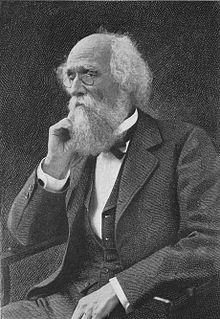He published Compend of Geology in 1884. The link below connects to the revised edition published in 1898. It could have been the textbook used to teach some high school students possibly in Tennessee. Edward Larson describes this on pages 16-17 in his earlier book Trial and Error published in 1985 and references a section related to the Genesis of the Horse as appearing on page 351, but in this edition, it appears on page 382. What is the significance of this textbook and other textbooks published after 1880 on the Scopes trial?
Bio on Joseph LeConte from Wiki.
Joseph Le Conte

Joseph Le Conte
BornFebruary 26, 1823Liberty County, GeorgiaDiedJuly 6, 1901 (aged 78)
Yosemite Valley, CaliforniaAlma materFranklin College, New York College of Physicians and Surgeons, Harvard UniversityOccupationPhysician, scholar, professor and conservationistSpouse(s)Caroline Nisbet
Joseph Le Conte (February 26, 1823 – July 6, 1901) was a physician, geologist, professor at the University of California, Berkeley and early California conservationist.
Early life[edit]
Of Huguenot descent, he was born in Liberty County, Georgia, to Louis Le Conte, patriarch of the noted LeConte family, and Ann Quarterman.[1] He was educated at Franklin College in Athens, Georgia (now the Franklin College of Arts and Sciences at the University of Georgia), where he was a member of the Phi Kappa Literary Society. After graduation in 1841, he studied medicine and received his degree at the New York College of Physicians and Surgeons in 1845.[2] (In 1844 he travelled with his cousin John Lawrence LeConte for over one thousand miles along the Upper Mississippi River in a birchbark canoe.[3]) After practising for three or four years in Macon, Georgia, he entered Harvard University and studied natural history under Louis Agassiz.[2] An excursion made with Professors J. Hall and Agassiz to the Helderberg mountains of New York developed a keen interest in geology.
Career[edit]
After graduating from Harvard, Le Conte in 1851 accompanied Agassiz on an expedition to study the Florida Reef.[2] On his return he became professor of natural science at Oglethorpe University, which was located in Midway, Georgia, at the time;,[4] and from December 1852 until 1856 professor of natural history and geology at Franklin College.[2] From 1857 to 1869 he was a professor of chemistry and geology at South Carolina College, which is now the University of South Carolina.
On January 14, 1846, he married Caroline Nisbet, a niece of Eugenius A. Nisbet. The Le Conte(s) had four children grow to adulthood: Emma Florence Le Conte, Sarah Elizabeth Le Conte, Caroline Eaton Le Conte, and Joseph Nisbet Le Conte.
During the Civil War Le Conte continued to teach in South Carolina. He also produced medicine and supervised the niter works (to manufacture explosives) for the Confederacy. In his autobiography he wrote that he found Reconstruction intolerable. He referred to "a carpet-bag governor, scalawag officials, and a negro legislature controlled by rascals" and stated that the "sudden enfranchisement of the negro without qualification was the greatest political crime ever perpetrated by any people". He later found the enfranchisement of the negro to be an asset to society.[5]
Discouraged by unsettled postwar conditions at the University of South Carolina, in 1868 he accepted an offer of a professorship at the newly established University of California. In September 1869, he moved west to Berkeley, California.[4] His older brother John had come to California in April 1869, also to join the faculty of the new University as a professor of physics. Joseph was appointed the first professor of geology and natural history and botany at the University, a post which he held until his death.
He published a series of papers on monocular and binocular vision, and also on psychology.[2] His chief contributions, however, related to geology. He described the fissure-eruptions in western America, discoursed on earth-crust movements and their causes and on the great features of the Earth's surface.[2] As separate works he published Elements of Geology (1878, 5th ed. 1889); Religion and Science (1874); and Evolution and its Relation to Religious Thought (1888). This last work anticipates in structure and argument Teilhard de Chardin's "Phenomenon of Man."(1955).[6] LeConte endorsed theistic evolution.[7]
No comments:
Post a Comment
Note: Only a member of this blog may post a comment.